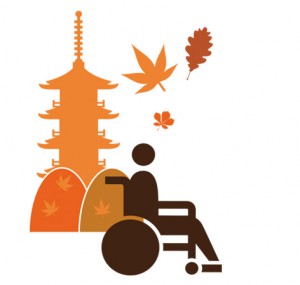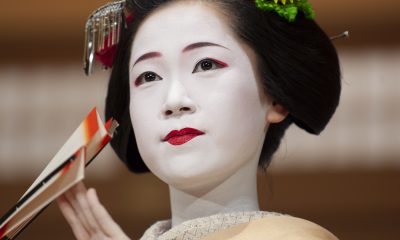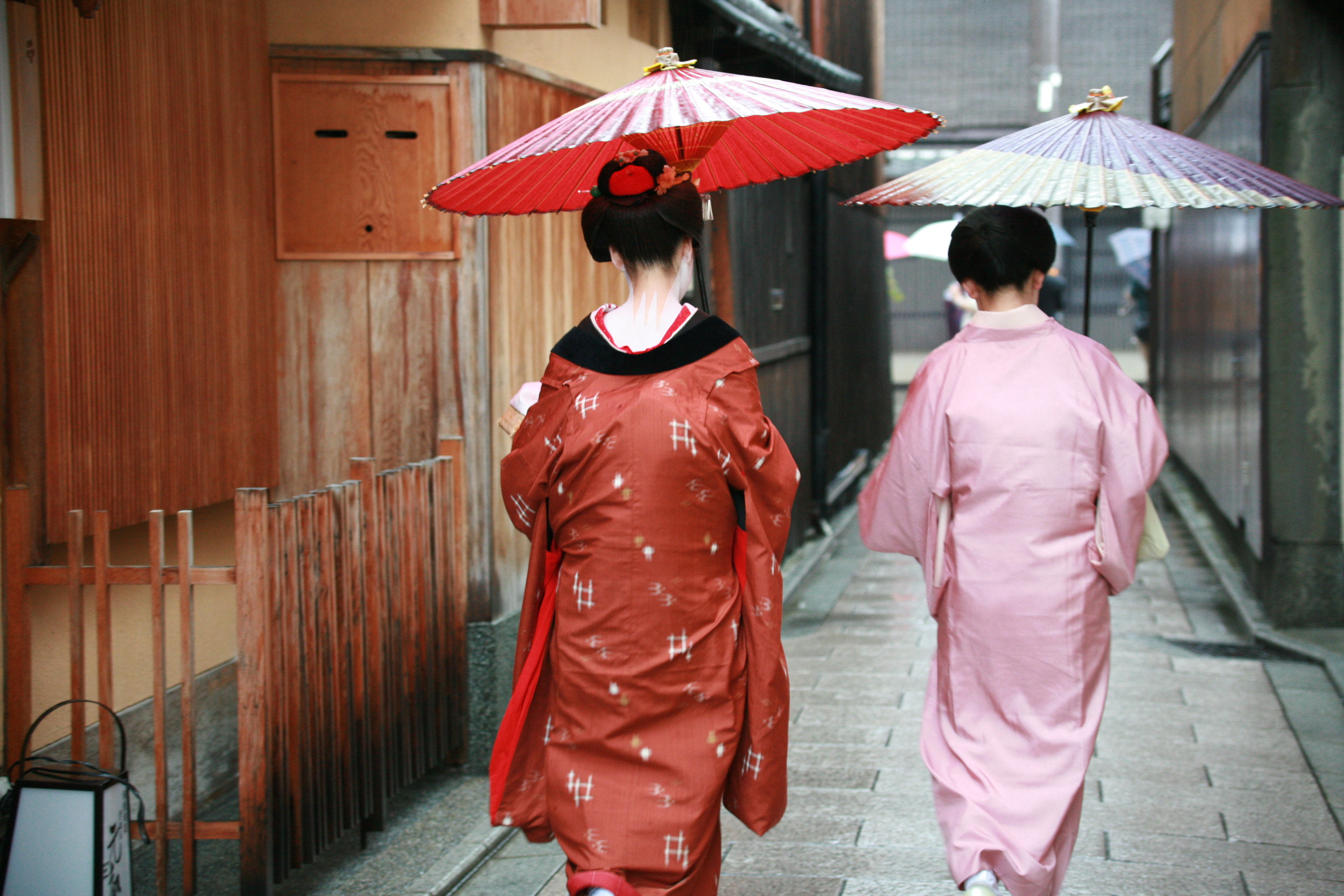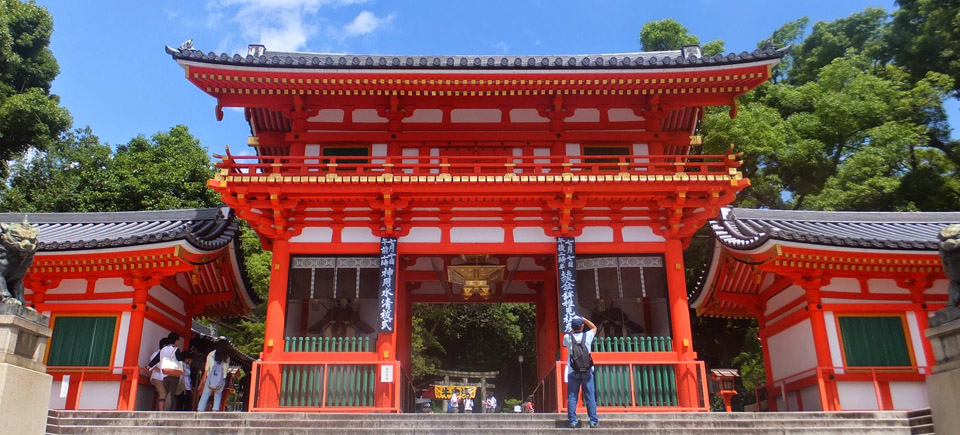Feature
Kyoto: Access all Areas
Autumn is one of the most beautiful times of year to be in Kyoto, but for some of us this old city is not as accessible as it could be. An expat shares his personal tips for wheelchair users exploring Kyoto.
If Hokkaido’s claim to fame is beer and seafood, and Tokyo has its otaku culture, then the Kansai region surely has the best pick of temples and shrines. From the oldest temple in Japan, Shitennoji in Osaka, to the 1,600 temples of Kyoto, visiting these spots is often the main reason people come to Kansai.
However, if you’re a wheelchair user, or your soon-to-be visiting friend is, you’ll definitely need to allow some extra pre-planning for the trip. Japan can be difficult for a tourist to navigate at the best of times, but throw in the complications associated with mobility problems, such as not knowing whether the place you want to see is accessible or not, what should be a dream holiday can quickly become a nightmare. If you lack a local friend to help you research and plan, or indeed you are the local friend being counted on, here are some basic pointers of accessibility you should consider.
If you’re a wheelchair user coming from abroad, before you even board the plane, know that the type of wheelchair you are using can matter. Do you use a wheelchair that has a steering wheel? If you do, try to obtain the use of a joystick or manually operated model for the trip. Japan’s health and safety officers, particularly on trains, do not seem to like the steering wheel models, and you may have to go to great lengths to demonstrate why you need that model. Your wheelchair should also be the smallest model you can comfortably use, as Japanese streets may be quite flat, but they are also very narrow.
If your Japanese is good, or you know a Japanese speaker who can help you out, phoning ahead to the places you will stay to check their level of access is a good idea. You might be pleasantly surprised; the Japanese service industry is legendary for being one of the few places where the customer is still always right.
There are some access issues to consider in rail and subway stations. Most stations in Kyoto are accessible regardless of your mobility, but sometimes there will be no electric escalator going down to the track, only those exiting the station. The elevator can place you quite far from the track, and often can only be found at one particular exit. The limited number of elevators can be an issue in larger stations, such as Kawaramachi, a station in Gion, where leaving by the wrong exit can place you in an entirely different part of town than you intended. I wouldn’t recommend avoiding particular train lines, as the most direct route is always the quickest, but leaving yourself plenty of time to navigate stations is the key to an enjoyable visit.
Gion is one of my favourite places to visit, as I was once rescued from a stampede of drunken Japanese men during a festival at Yasaka Shrine by an apprentice geisha, a maiko. I was stumbling very slowly down a staircase, the entrance to the shrine, with a herd of merry salarymen behind me. A maiko appeared and took my hand, and the herd parted like the red sea. Nobody messes with geisha in Kyoto!
However, despite friendly geisha and the images of the wise sages of Japanese Buddhism, with their long walking sticks and equally long beards, the path to enlightenment is apparently not always wheelchair accessible and never barrier free.
“I was once rescued from a stampede of drunken Japanese men during a festival at Yasaka Shrine by an apprentice geisha…A maiko appeared and took my hand, and the herd parted like the red sea. Nobody messes with geisha in Kyoto!”
The main entrance to many temples and shrines is marked by a long and steep staircase. This is no accident, as they were constructed to inspire awe and wonder, and to provide a physical hardship for the pilgrim, one to mirror the journey that your spirit should be undertaking. Well, becoming one with everything maybe a worthwhile pursuit, but it can also be very exhausting! But all is not lost.
Many temples and shrines have websites, showing where the entrance and exits are, and many of the websites are thankfully also in English, so a bit of research can help you avoid disappointment. Some places, such as Yasaka Shrine in Gion, have a back entrance that can help you avoid the stairs.
If you want to see Kinkakuji, The Temple of the Golden Pavilion (and no visit to Kyoto is complete without seeing it!), it is ultimately accessible, but not without a lot of effort. The famous Zen temple Ryoanji is entirely inaccessible, as it is so old, its structures cannot take wheelchairs. If you really want to see a Zen temple, I recommend Myoshinji for being slightly more accessible.
As a side note, Todaiji in Nara, with its giant wooden Buddha and adjacent deer-filled Nara Park is really quite flat and very accessible (and pre-dates many of the temples in Kyoto). It is also worth noting that Sanjusangendo, and Ginkakuji (The Temple of the Silver Pavilion, in Kyoto) are actually quite wheelchair accessible, so there enlightenment is guaranteed!
Let these three words be your mantra: “research, research, research”. Make sure you take the right exit at stations, avoid Kyoto during festivals, unless you’re certain you can physically take it (superhero maiko I’m sure are not always on hand), and you’ll have a great time. Enjoy Kansai!
障害者の京都旅行
秋は京都がもっとも輝く季節。だがこの美しい古都を、自由自在に歩き回れ ない人々もいる。日本で長く暮らし、自身も障害者である著者が、車椅子で 京都を訪ねるコツを指南する。
ビールと海の幸なら北海道。オタク文化の 聖地は東京。そんな旅行者の視点から見れ ば、関西地域の魅力はなんといいっても神 社仏閣の豊富さだ。日本最古の寺である大 阪の四天王寺から、1,600軒もの寺院を擁 する京都まで、古刹の拝観が目当てで関西 を訪れる旅行者は多い。
しかし、あなた自身が車椅子の利用者だっ たり、これから日本にやってくる友人が障害 者なら、あらかじめ念入りな準備が欠かせ ない。簡単そうに見えても、外国人は日本 旅行で思わぬ困難に出くわすことがある。 ましてや目的地へ本当にたどり着けるのか 否かを分ける移動手段の問題がからんでく ると、夢の休日が一転して悪夢に変わりか ねない。あなたの日本旅行を手助けしてく れる現地の友人がいない場合、あるいはあ なたが来日する友人を招く立場である場合 に、障害者が知っておくべきあれこれをご 紹介しよう。
もしあなたが車椅子で日本を旅するつもり なら、車椅子の種類が大問題になることを 飛行機搭乗前から思い知らされることにな るだろう。ハンドル付きの電動車椅子をご 利用の方は、操縦桿で操作するタイプか、 手動の車椅子を旅行用として準備したい。 ハンドル付きの電動車椅子は日本中の安全 基準担当者に嫌われ、特に電車移動の際に 苦労を強いられる。なぜ自分がハンドル付 き電動車椅子を必要とするのかを説明する だけで、気が遠くなるほどの時間がかかる のだ。さらに車椅子は、ぎりぎり快適に扱え る最小のサイズでなければならない。日本 の歩道は凹凸が少ないが、その反面とても 道幅が狭いからだ。
日本語が十分に話せる人や、旅の補助をし てくれる日本語話者がいるのなら、あらか じめ宿泊先のバリアフリー度を電話で問い 合わせておこう。そうすれば、滞在先で嬉 しい驚きが待っているかもしれない。客の わがままをいつも受け入れてくれる、世界 的に希少なサービスが日本のおもてなしの 伝統である。
 鉄道や地下鉄の駅でも、移動時に考慮すべ き問題がいくつかある。京都のほとんどの 駅はバリアフリーになっているが、エスカレ ーターの整備は不完全だ。出口に向かう上 りエスカレーターだけで、ホームに降りる 下りエスカレーターが少ない。エレベータ ーはホームからかなり離れた場所にあり、 エレベーター付きの出口も1箇所だけとい う場合が多い。
鉄道や地下鉄の駅でも、移動時に考慮すべ き問題がいくつかある。京都のほとんどの 駅はバリアフリーになっているが、エスカレ ーターの整備は不完全だ。出口に向かう上 りエスカレーターだけで、ホームに降りる 下りエスカレーターが少ない。エレベータ ーはホームからかなり離れた場所にあり、 エレベーター付きの出口も1箇所だけとい う場合が多い。
エレベーターの数が少ないと、河原町のよ うな大きな駅では困ったことになる。河原 町は祇園の最寄り駅だが、出口を間違えた だけで目的地とはまったく異なる方角に放 り出される。京都は乗り換えが少ないほど 速く移動できるので、避けるべき路線は特 にない。それでも快適な旅行を望むなら、駅 構内での移動にかかる時間をたっぷりとみ ておくのが得策だ。
祇園は私のお気に入りの場所である。とい うのも、祭の時期の八坂神社で、酔っ払い の集団から芸妓に救い出されたことがある のだ。本殿に向かう石段をやっとの思いで よろよろと下っていると、後ろから酒に酔っ たサラリーマンの一団が押し寄せてきた。 そこに一人の舞妓さんが現れて私の手を 取ると、群衆は潮が引くようにいなくなった のである。京都で、芸妓に粗相をする者は いないのだ。
そんな親切な舞妓さんや、長い杖の似合 う老僧が、日本の古き叡智のシンボルであ る。にもかかわらず、 悟りへの道は車椅子 に厳しい。そして神社仏閣がバリアフリー であることは滅多にない。
多くの神社仏閣の入り口付近では、長く険 しい石段が待ち受けている。たまたまそう なったわけではない。石段が聖地への畏怖 と驚嘆を呼びおこし、巡礼者の肉体に労苦 を与え、精神的な鍛錬の旅路を反映させる ように設計されているのだ。そのような苦 行を、一度しっかりと体験する価値もあるだ ろう。だが、いかんせん精も根も尽き果てて しまう。しかしここで諦めてはいけない。
多くの神社仏閣にはウェブサイトがある。入 口と出口の場所が明記され、ありがたいこ とに英文の解説を掲載したサイトも多い。 事前に下調べをしておけば、現地で失望さ せられることもないだろう。祇園の八坂神 社の裏門のように、階段を回避できるルー トも見つけることができる。
京都観光のハイライトのひとつである金閣 寺は、車椅子で十分に訪ねることができる ものの、それなりに骨は折れる。その一方 で、禅寺の代表である竜安寺はまったく訪 問不能だ。あまりにも古く、構造上、車椅子 では見学できない。どうしても禅寺を訪ね たいのなら、竜安寺よりやや障害者にやさ しい妙心寺をお勧めする。
「祭もたけなわの八坂神社で、酔っ払いの集団 から救い出されたことがある。一人の舞妓さんが 現れて私の手を取ると、群衆は潮が引くようにい なくなった。京都で、芸妓に粗相をする者はいな いのだ。」
ついでにいえば、大仏で有名な奈良の東大 寺や、鹿と触れ合える隣接の奈良公園もお 勧めだ。起伏がほとんどないので車椅子で も訪ねやすいし、京都の多くの寺よりも長 い歴史がある。京都では三十三間堂と銀閣 寺がいい。車椅子でも楽に拝観でき、快適 な悟りの時間が約束されている。
関西の旅を成功させる魔法の真言、それは 「リサーチ、リサーチ、リサーチ」である。 駅では正しい出口を間違えずに探し出すこ と。そして肉体的に耐えられる自信がない かぎり、祭りの時期の京都は避けること(親 切な舞妓さんに出会える保証はない)。 事前の準備をしっかりと整えて、素晴らしい 関西の旅をお楽しみください。





















